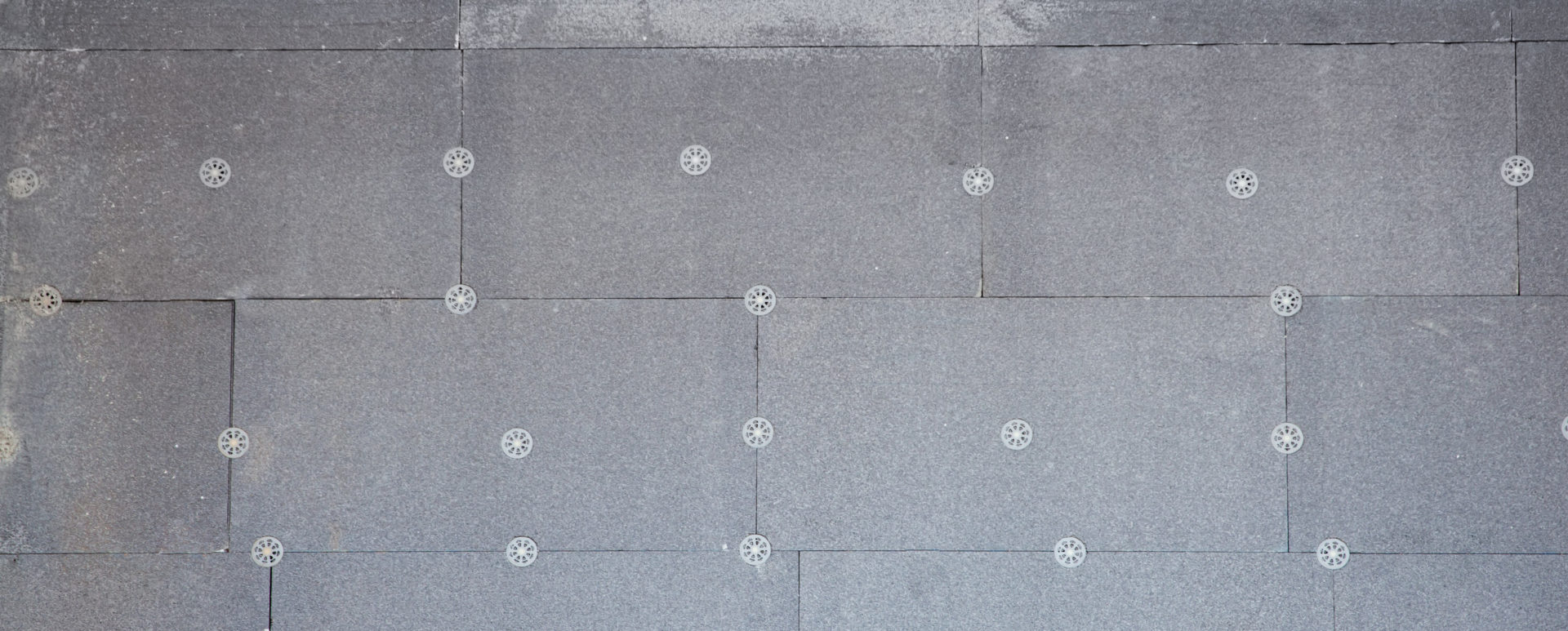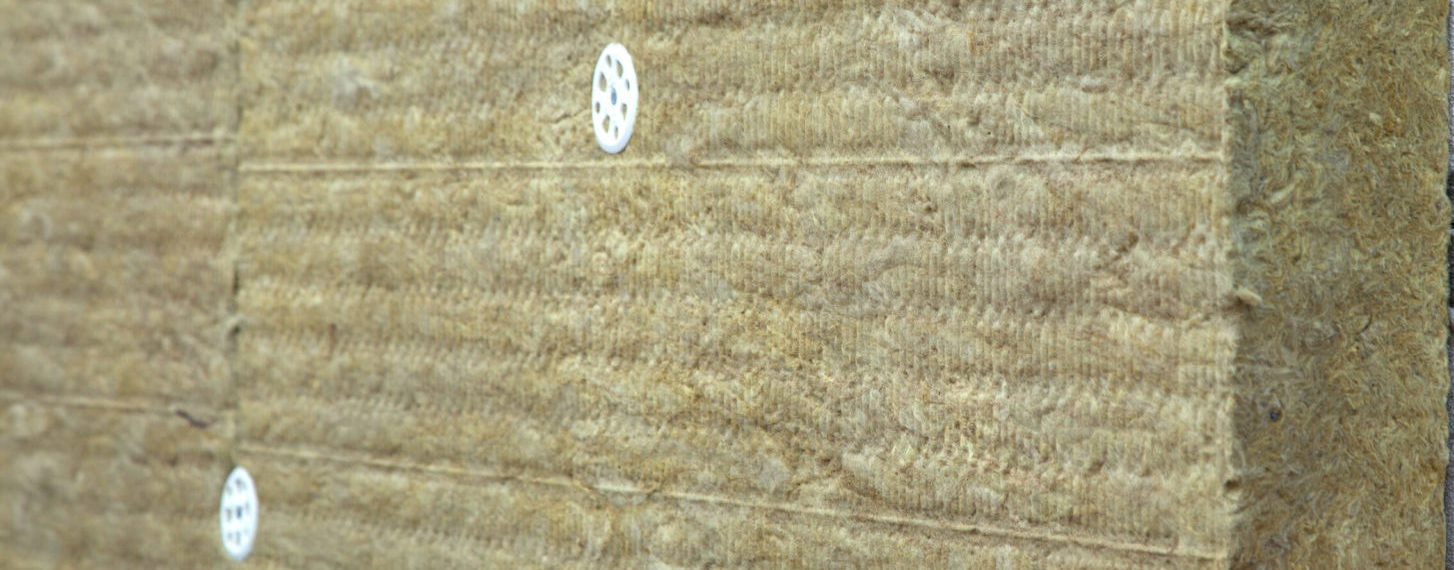It’s important that specifically designed external wall insulation panels are incorporated within any EWI system. When it comes to specifying EWI Insulation, typically, there are two main types of insulants:
1: Expanded Polystyrene (EPS) For EWI Systems
The benefits of EPS are that it’s very lightweight and cost effective with good insulation performance. External EPS insulation is now typically infused with graphite making it grey in colour rather than the white we usually associate with polystyrene. Graphite is added because it improves insulation capabilities by around 20% over traditional EPS and also reflects radiant heat away.

On the downside though, EPS is NOT non-combustible and hence there are restrictions in place as to where it can and can’t be used. Because of this, current regulations stipulate it cannot be used on buildings over 18m high in England and Wales and 11m in Scotland.
2: Mineral Fibre (mineral wool, stone wool, rock wool) For EWI Systems
The benefits of mineral fibre include high levels of breathability, its moisture repellence properties and excellent acoustic insulation performance. Perhaps the main benefit lies in the fact that mineral fibre insulation is officially classed as non-combustible and can actually act as a fire barrier to help slow down the rate and spread of flames. This means there are no restriction to where it can be used – including on high rise buildings.

The downside is that it’s not as thermally efficient as EPS along with the fact it’s a heavier product that’s a little more difficult to work with and a little more expensive to buy.
Alternative specialist insulants may also be used in certain circumstances or for particular details. These include phenolic, PIR, extruded polystyrene, polyurethane, cork and wood wool insulation amongst others.
EWI – Insulation Specification
This very much depends on the thermal performance required, the type of building, the budget and any specific requirements above and beyond current regulations.
Thermal Performance
In very simple terms thermal performance is measured as a thermal transmission rate which and known as a U-value and expressed in W/m2. In EWI terms this U value represents the overall heat lost per 1 square meter of wall.
Current maximum U values for elements of buildings can be found in the current Building Regulations (Approved Documents L1 and L2) for England and Wales and are currently (March 2022) as follows:
- Refurbishment of existing buildings 0.30 W/m2
- New extensions to existing properties 0.28 W/m2
- New build properties 0.18 W/m2
The thicker the insulation the greater the beneficial impact on the U value. At specification stage your system designed will calculate the thickness of insulant required to achieve the current regulations (as a minimum) or improved targets within the constraints of the project.
Every project will be different but to give you a rough guide. A typical solid wall property may have a U value of around 2.1 W/m2
Installing an EWI system incorporating only 50mm thick EPS insulation may reduce this significantly, it may only get it down to around 0.6 W/m2 and not meet regulations. Increasing the thickness to 100mm will make a much greater impact and get it down closer to the required 0.30 W/m2 and doubling the thickness again to 200mm will get it down to around the 0.18 W/m2 required for new build properties.
As I said though – these numbers are intended as a very general guide only. Actuals completely depend on each property, the build up of the walls and the impact of any existing insulation.
Type Of Building
Current fire regulations stipulate that any UK building over 18m high (11m in Scotland) must only incorporate a non-combustible insulant within any EWI system. This means that mineral fibre must be used and EPS should not be specified on these types of building.
Budget
EPS is a lower cost, easier to work with and provides improved insulation properties over mineral fibre and hence prove more cost effective BUT regulations should always be adhered to first and foremost.
Additional Requirements
Regulations set the minimums – as a client you may decide you want to achieve better or stipulate a non-combustible system to a low-rise project. The specification should therefore be drawn up accordingly.
Contact an INCA system designer or installer member to discuss your EWI specification – Find An INCA Member >.
